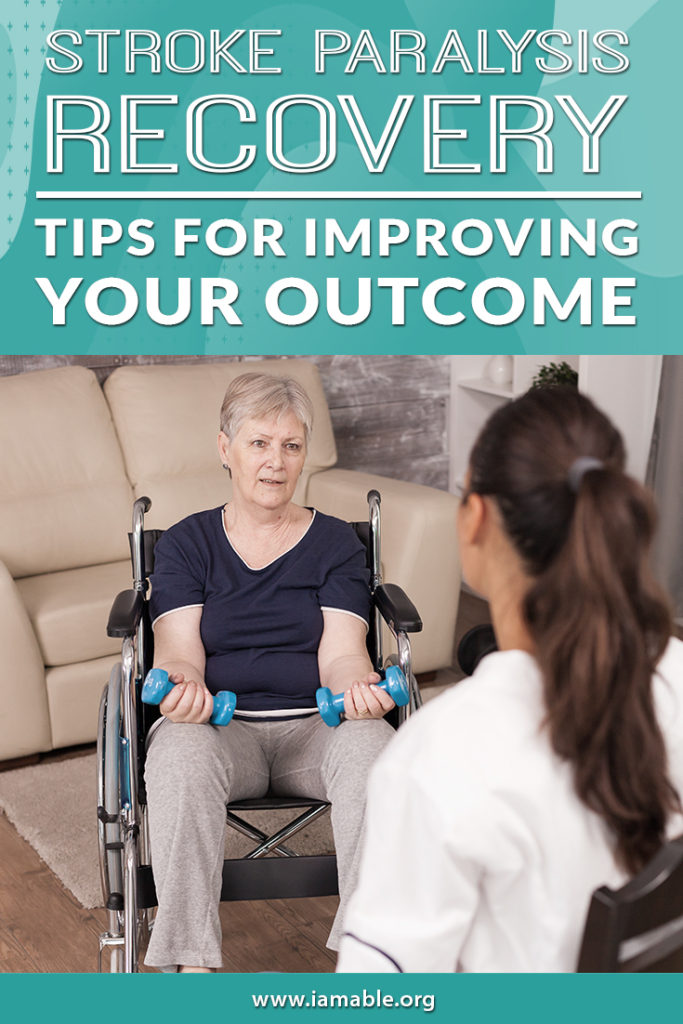Miami, FL 33186

In the wake of a stroke, you are likely thinking about possible outcomes. Will any paralysis that you are now experiencing be permanent, or will you be able to make a full recovery? While some long-term stroke effects will relate to the extent of the damage, you may be able to work through others with perseverance and effort. We’ve seen patients with a gloomy prognosis achieve stunning paralysis recovery simply by not giving up and taking advantage of modern technologies and therapies. So let’s take a look at some of the top tips to help you with stroke paralysis recovery.
You do not want to risk losing any of the function that you have either retained or regained in the wake of a stroke paralysis recovery. Therefore, it is essential to use your full range of motion on a daily basis to reduce spasticity, stay flexible, and keep your strength up. Physical therapy will help with this process. However, you should also receive exercises to do on your own.
Movement that you have lost may be due to portions of the brain that are no longer functioning in the wake of the stroke. However, the body has the marvelous ability to rewire nerve pathways. As a result, you may be able to restore some ability. The key is to perform the movements you wish to restore. How is that possible with paralysis?
Passive exercises involve using muscles that function to move parts of the body that are currently not working. You may be able to perform some of these exercises on your own. Others will require the help of a physical therapist. Lokomat therapy can even allow a paralyzed person to experience walking, and this may help the body to rewire to the point where you can recover your ability to walk.
This is another excellent technique for enhancing neuroplasticity. Activity-based therapy gets you moving, at least to the extent possible. Performing the same motions over and over again can help the body to rewire even more. It can also get the body prepared to rewire for other activities. Lokomat therapy is one type of activity-based therapy. FES (functional electrical stimulation) may also help, but we will discuss this later in the article. The key is to have some periods of moderate activity several times a week. This will also be beneficial for your heart and your breathing, so there is nothing to lose and so much potential for gain.
Your body gets better at something that you do over and over again. This is true even for a person who is not in the process of recovering from a stroke. It is the same process by which an athlete hones their skills to compete at the Olympics. Now, you need to apply that same dedication to your paralysis recovery. Keep doing to motions over and over again, especially the passive exercises we mentioned earlier, to get your brain rewired for movement. When it comes to neuroplasticity, more is definitely better.
Don’t just get out there and do it. It will also help if you spend time thinking about activity, even when you are resting. Visualize yourself reaching your goals and moving the muscles that you can’t control right now. Your thoughts have a powerful effect on your body, so don’t waste time with negative thoughts. Train yourself to meditate on positive things and see yourself moving and walking with your mind’s eye. Your brain may just follow the lead of your thoughts.
Your brain sends tiny electrical impulses to stimulate the muscles so that you can move. If you can’t get your mind to do it, using external electrical impulses is the next best thing. FES allows a physical therapist to control the electrical impulses so that you can activate paralyzed parts of the body in a safe and efficient way.
At the very least, this can help with spasticity because you are actually getting those muscles to activate. It may also help with strength and tone. The most significant benefit will come if FES helps you to rewire and restore function. You can use FES along with a stationary cycle to get some exercise for paralysis.
Mirror therapy can be particularly crucial for restoring motion in your hands. The intention is to trick your mind into thinking the paralyzed hand works. You do this by covering the paralyzed hand with a mirror. Then you use your functional hand to exercise or make certain formations. Your mind sees the mirror reflection where the non-functional hand should be. This can convince the brain that the hand can still move, and it may rewire faster.
Paralysis Recovery Timeline: How Long Will My Recovery Take?
Paralysis recovery in southern Florida is what we specialize in at iAM ABLE. However, whether you live in the area or not, you can benefit from our eBook, 7 Unbelievably Important Steps to Take to Thrive after Paralysis. This book can help you to prepare for the journey ahead of you. Read it over and contact us today to learn what our physical therapists and state of the art facility can do for you.
Grab our free e-book 7 Unbelievably Important Steps to Take to THRIVE after Paralysis by clicking the image below.
